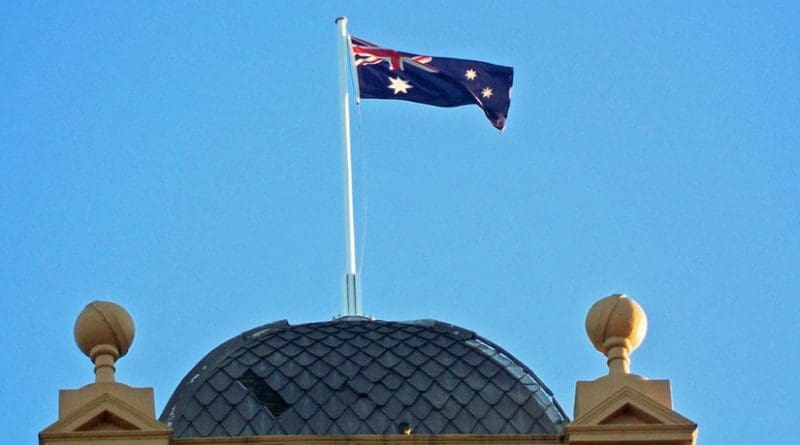Eaten Fish And The Refugee Crisis: Cartoons, Brutality And Manus Island – OpEd
“Every story I said in my drawings is nothing but the truth. I drew whatever happened to me.” — Eaten Fish, Iranian Cartoonist on Manus Island, Sep 9, 2016
Graphic depictions of cruelty come in an assortment of forms. The cartoon medium can convey the grotesque with brilliant effect, proving both witheringly caustic and poignant. The prints of Otto Dix emphasise the cripple, the mangled body, the state of disgust of a society suffering from the effect of a calamitous war. His contemporary of Weimar Germany, George Grosz, was similarly ruthless as part of the Neue Sachlichkeit (New Objectivity) movement, insisting on dramatic grimness in conveying full effect.
What such artists insist upon is an unvarnished depiction of cruelty. In modern times, the notion of a caricature has usually made the front news because it supposedly mocks the Prophet in distasteful fashion. Of far greater interest is the social critique provided by such depictions as those of Eaten Fish.
Eaten Fish, an Iranian refugee artist, is a three year resident on Manus Island with some illustrative capability. He remains in a facility that is yet another cog in the ghastly machine that is Australia’s offshore processing regime. Every day, he explained to The Guardian, is much the same as the previous 800. He is being gradually numbed to death.
According to Researchers against Pacific Black Sites, a site given over to exposing the gruesome aspects in Australia’s refugee gulag, “Expert medical opinion is that Eaten Fish is the subject of trauma that caused him to seek refuge.” Being in the vicious facilities on Manus Island have further “exacerbated” his condition.[1]
That condition is a compendium of suffering: Complex Post Traumatic Stress Disorder, a highly acute sense of Obsessive Compulsive Disorder and Disassociation with episodes of panic attacks and somatization.
To the same organisation, Eaten Fish has been graphic, mournful, and unqualified in his desperation. In a statement to the RAPBS, he speaks about telling the world about having a “serious problem”; about locking “himself away because no-one understands him”; about not wanting to be assaulted, and just hankering for the “normal life.” “I want my right to be a healthy person.”[2]
Long time students of Australian refugee politics Suvendrini Perera and Joseph Pugliese have taken note about what Eaten Fish has done to jolt and sear audiences. His images are fearfully busy, crowded with camp woe. “His artworks are wordless messages from a submerged world of fear and violence. They bring before our eyes, in unprecedented details, that which is being kept secret and hidden from our sight.” The brutish camps; the cruelty of the guards; the predatory nature of the system.
Camps of human beings, with their censoring mechanisms fed by establishment goons tend to be places of conscious, controlled isolation. The lack of images squeezed out, the attempts to control the leaking of compromising material on sexual, physical and mental abuse, make these images even more suggestive. This is the mind at work, working and screaming.
Eaten Fish has gone for the grunt, for the doom, for the terror; he has suggested that the best way to move is to pick a medium that draws horror out of a sketched image. It is suggestive of regional, disgraceful failure; suggestive of sanctioned cruelties against those who should be assessed in communities.
One crowed image of colour and detail entails the composition of nightmare and consuming brutality.
There is a chicken waiting to be consumed, bloodied and expressive the message “I love you Ali, Come and eat me.” There are the buried – Reza and Hamid; there is the symbol of the private security firm Transfield, which can count on the Australian and PNG governments to immunise their wrongs.
It is such work that won Eaten Fish an award from the Cartoonists Rights Network International, specifically in the category for Courage in Editorial Cartooning. It is an award as much as acknowledgment for a variant of dissident activism. For his images, Eaten Fish has suffered food deprivation, beatings and sexual abuse.
For that reason, much of this artistic acknowledgment seems a mere belch in the general direction of nothingness – Eaten Fish continues to degenerate, atrophying in his surrounds. But at least more have come to register the fate of Eaten Fish on the rather distorted radar of Australian refugee consciousness.
The campaign to remove the now 25 year-old from Manus Island has gotten steam. International papers have covered his case, and run his bleak cartoons in disbelief at Canberra’s policies. Australian cartoonists have been mobilised. Activists have been noisy. But nothing has come close to the traumatised noise, horrifying in its dimensions, than the images Ali, otherwise known as Eaten Fish, has generated.
As Robert Russell, executive director of CRNI noted, “His cartoons will some day be recognised as important, world class chronicles of the worst human behaviour since the World War II concentration camps.”[4] Pungently devastating stuff indeed.
Notes:
[1] http://researchersagainstpacificblacksites.org/
[3] http://researchersagainstpacificblacksites.org/wp-content/uploads/2016/07/nightmare.jpg

